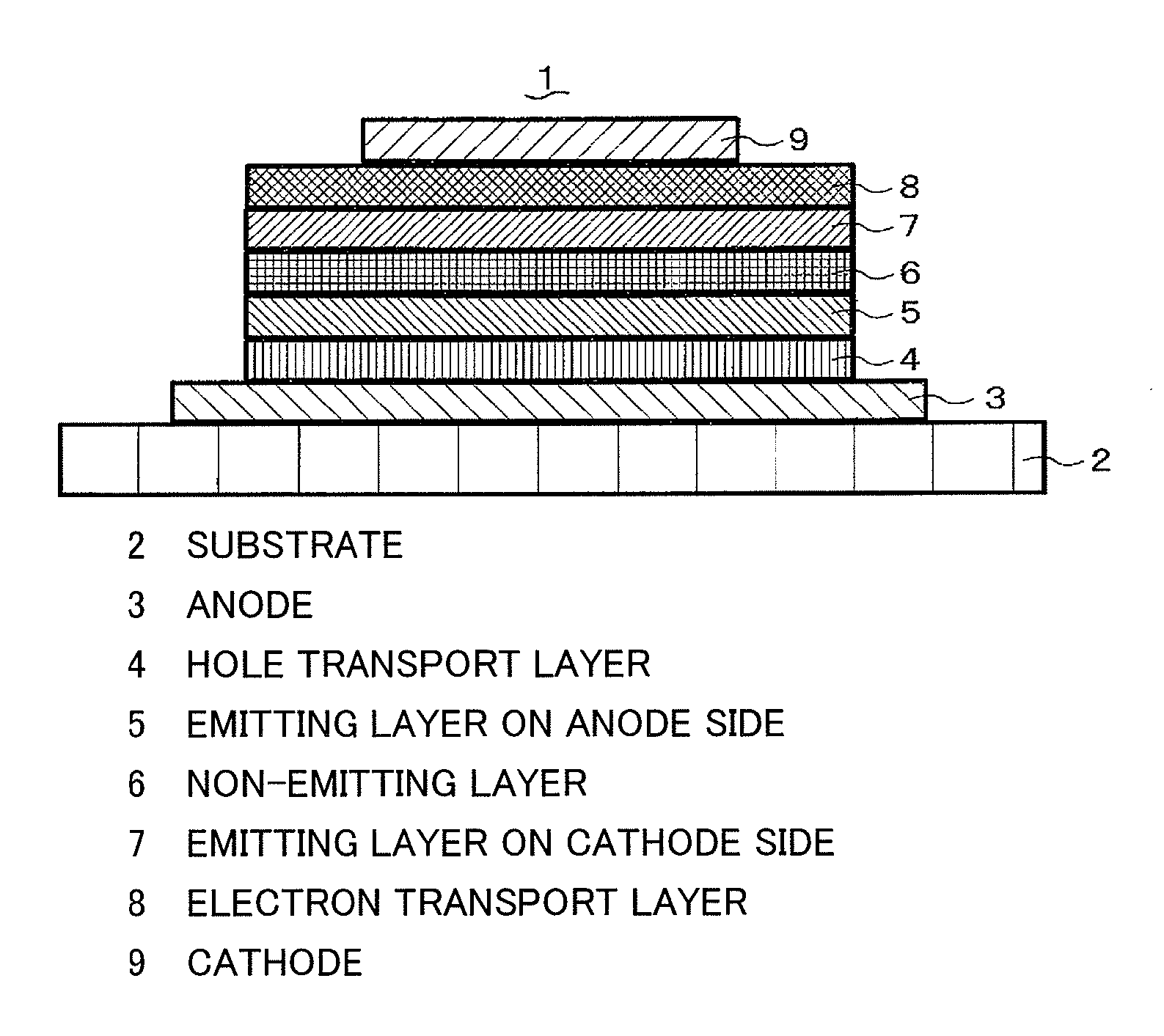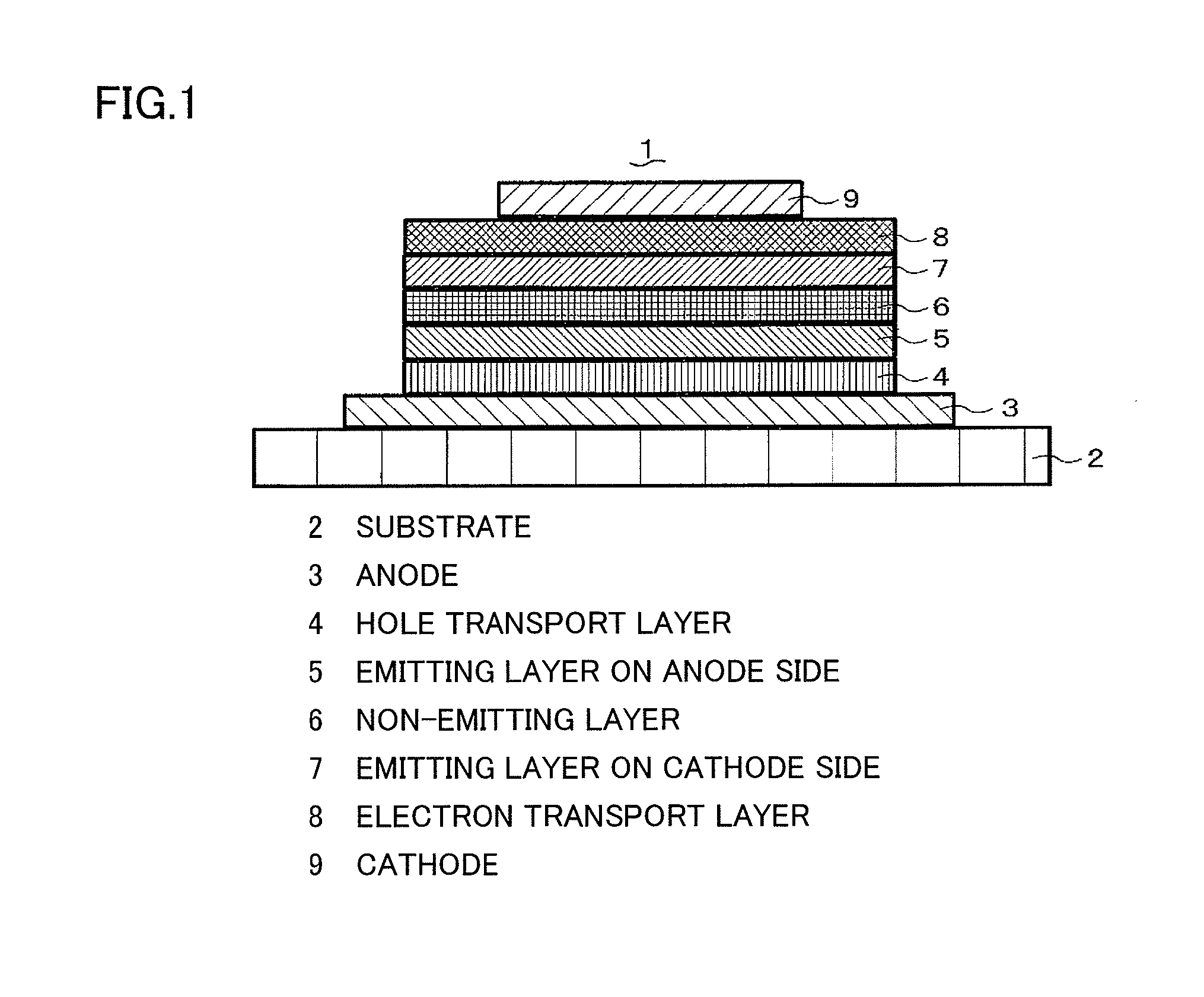Organic el element
a technology of organic el and elements, applied in the field of organic el (electroluminescence) elements, to achieve the effect of easy extraction of substrates and easy optical designs
- Summary
- Abstract
- Description
- Claims
- Application Information
AI Technical Summary
Benefits of technology
Problems solved by technology
Method used
Image
Examples
modification example
[0045]A modification example of the organic EL element 1 is described below. The organic EL element 1 of the modification example differs from that of the above preferred embodiment in that the non-emitting layer 6 has the electron transporting property instead of the hole transporting property and at least one energy transfer auxiliary material is included in the electron transporting material in the non-emitting layer 6. In the organic EL element 1, the energy transfer auxiliary material transfers the excitation energy in the non-emitting layer 6 to the emitting layers 5 and 7 adjacent to the non-emitting layer 6 effectively, so that the luminous efficiency of the emitting layers 5 and 7 can be enhanced. Moreover, due to the emitting layer 5 on the anode side which has the hole transporting property, it is difficult for the electrons to reach the hole transport layer 4, so that the hole transport layer 4 is not deteriorated, and the organic EL element 1 can thereby have the long l...
working example 1
[0050]The organic EL element 1 is formed by laminating, in order from the substrate 2 side, the anode 3, the hole transport layer 4, the emitting layer 5 on the anode side which is made of the host material and the emitting dopant, the non-emitting layer 6 which is made of the hole transporting material and the energy transfer auxiliary material, the emitting layer 7 on the cathode side which is made of the host material and the emitting dopant, the electron transport layer 8, and the cathode 9 on the substrate 2. Materials of the respective layers are as follows: the substrate 2 is made of alkali-free glass; the anode 3 is made of ITO; the hole transport layer 4 is made of NPD; the host material of the emitting layer 5 on the anode side is NPD; the emitting dopant of the emitting layer on the anode side is 2-methyl-6-[2-(2,3,6,7-tetrahydro-1H,5H-benzo[ij]quinolizin-9-yl)ethenyl]-4H-pyran-4-ylidene]propane-dinitrile (DCM2); the hole transporting material of the non-emitting layer 6 ...
working example 2
[0051]The organic EL element 1 is obtained in a manner similar to the working example 1 except that the energy transfer auxiliary material of the non-emitting layer 6 is ruburene.
PUM
| Property | Measurement | Unit |
|---|---|---|
| ionization potential | aaaaa | aaaaa |
| thickness | aaaaa | aaaaa |
| emission wavelength | aaaaa | aaaaa |
Abstract
Description
Claims
Application Information
 Login to View More
Login to View More - R&D
- Intellectual Property
- Life Sciences
- Materials
- Tech Scout
- Unparalleled Data Quality
- Higher Quality Content
- 60% Fewer Hallucinations
Browse by: Latest US Patents, China's latest patents, Technical Efficacy Thesaurus, Application Domain, Technology Topic, Popular Technical Reports.
© 2025 PatSnap. All rights reserved.Legal|Privacy policy|Modern Slavery Act Transparency Statement|Sitemap|About US| Contact US: help@patsnap.com


